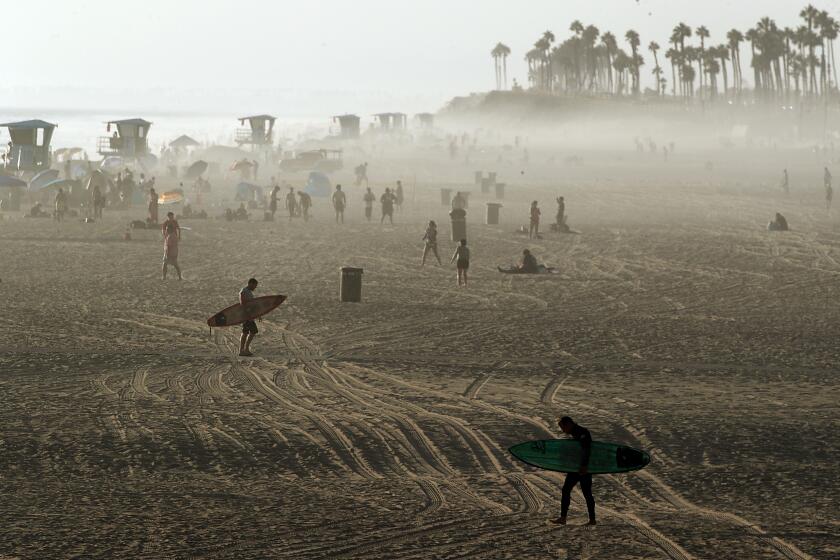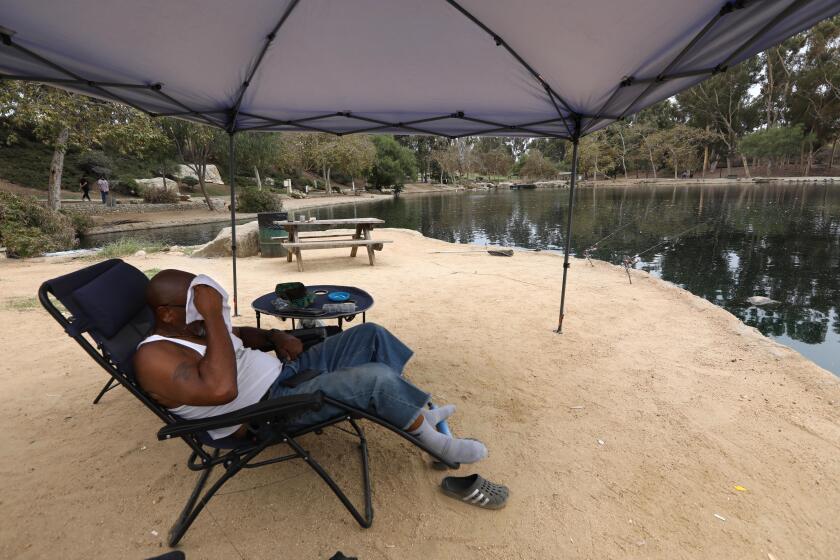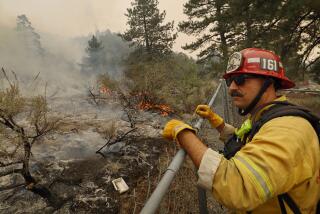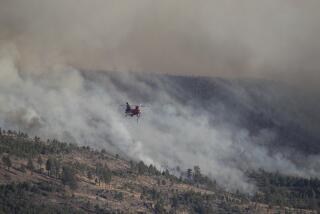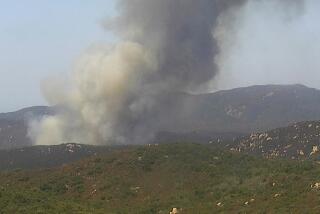Mosquito fire surpasses 63,000 acres to become largest blaze in California this year
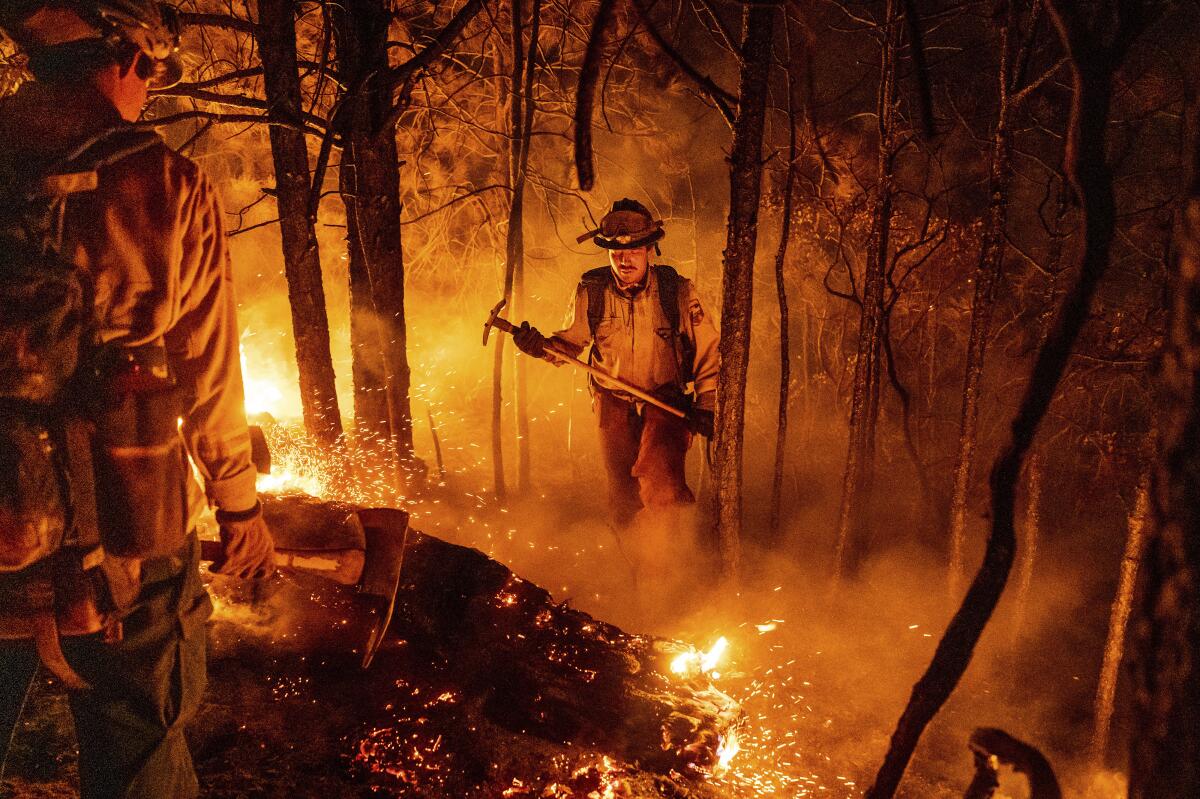
A wildfire west of Lake Tahoe continued to burn through historically dry vegetation Wednesday, roaring past 60,000 acres to become Californiaâs largest fire of the year as firefighters battled to protect mountain communities.
The Mosquito fire, which is burning in Placer and El Dorado counties, grew by nearly 10,000 acres overnight, from 50,330 acres to 58,544 acres by Wednesday morning, according to the California Department of Forestry and Fire Protection. By Wednesday night, the fire, which is 20% contained, had grown to 63,776 acres.
The McKinney fire in Siskiyou County, previously the yearâs largest in California, has burned 60,138 acres and is 99% contained.
Although wind is most often a major concern in the growth of wildfires, the Mosquito fire has largely been driven by historically dry vegetation, exacerbated by last weekâs historic heat wave, said Scott McLean, spokesman for the fireâs joint command.
The West has long experienced episodes of dangerously elevated temperatures, but studies have shown that human-caused climate change is making heat waves more prolonged, frequent and intense, and driving extreme wildfire behavior.
âFrankly, thereâs no moisture in the vegetation right now,â McLean said. âYou could throw one spark and itâs going to start off.â
Cooler temperatures and higher humidity Wednesday helped crews hold the fire inside established control lines, Cal Fire officials said.
Firefighters continued to patrol, mop up and secure lines along the Foresthill Road corridor, focusing on an area where a spot fire had made an aggressive run toward a community Tuesday.
The La Niña climate pattern, which tends to bring dry conditions to the Southwest, is expected to persist for another year amid the ongoing drought.
The fireâs eastern front continued to grow steadily âwith active fire behavior into dense forested areas with critically dry fuels and little fire history,â Cal Fire officials said.
Winds out of the southwest Wednesday proved lighter than the day before. Still, they were able to move a smoke inversion, where warm air traps smoke and cooler air below, out of the fire area, which gave crews more opportunities to attack the blaze using firefighting aircraft, officials said.
The Mosquito fire has destroyed 64 buildings, damaged 10 and is threatening 9,236 more, officials said.
Jonathan Pangburn, a fire behavior analyst with Cal Fire, said the blaze was reminiscent of the 2014 King fire, in which firefighters faced similarly dry fuel and, in some instances, had been surrounded by fast-moving flames, forcing them to deploy their emergency fire shelters.
To address the scorching heat, L.A. has set up cooling centers. But most Angelenos choose to hunker down in a sliver of shade.
âThose events were similar to this, not wind-driven events, just fuel that was primed and ready and decided to get up with a hurry and put some people in some dangerous situations,â Pangburn said. âWeâre ready for an absolute blowup out here.â
Smoke from the Mosquito fire continued to spread throughout Northern California.
Air quality in the Sacramento region was at unhealthy levels Wednesday and was expected to reach hazardous levels on Thursday and into the weekend, the El Dorado County Air Quality Management District said on Twitter.
There were 3,052 personnel assigned to the Mosquito fire Wednesday, along with 80 water tenders and 65 bulldozers, Cal Fire officials said.
More to Read
Sign up for Essential California
The most important California stories and recommendations in your inbox every morning.
You may occasionally receive promotional content from the Los Angeles Times.
